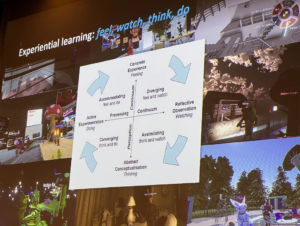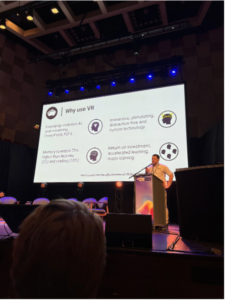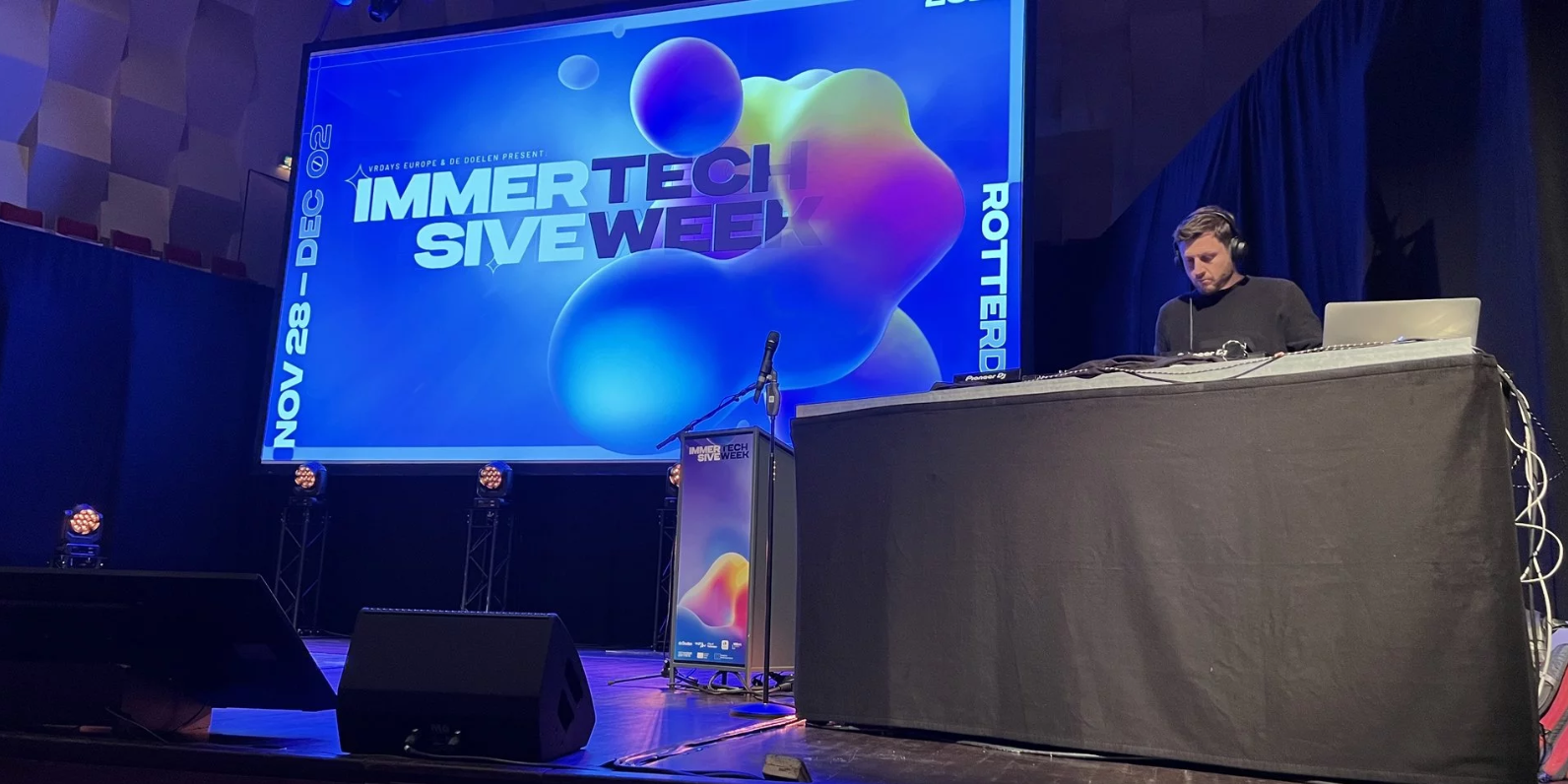Report from Rotterdam: An update on XR
An annual conference in the Netherlands showcased the latest developments in virtual reality, augmented reality and mixed reality. How can it improve learning?
January 30, 2023 | Erik Brown
Attending Immersive Tech Week 2022 in Rotterdam was a truly eye-opening experience. As someone interested in the potential of immersive technologies, I was blown away by the progress made in recent years and the excitement palpable at the conference, which took place Nov. 27-Dec. 1, 2022.
For those who may not be familiar, immersive technologies, often called XR for extended reality, refer to a range of technologies that allow users to feel as if they are physically present in a virtual or digitally-created environment. Immersive technologies include virtual reality (VR), augmented reality (AR), mixed reality (MR), and other similar technologies. These technologies are still in the early days of development, but they have the potential to revolutionize a wide range of industries, including education.
An array of impressive new programs were on display, such as:
- Changingday’s BLINNK was created specifically for people with autism. Their goal is to create safe spaces virtually to help people with autism develop their confidence to navigate the actual world.
- NeuroReality’s Koji’s Quest, which is currently preparing for clinical trials, is a neuropsychological game which uses a virtual companion, Koji, to support patients who need to retrain their brains by inducing neuroplasticity. The VR glasses are able to capture 13,000 bits of data every minute, sharing robust metrics for clinicians to monitor remotely.
- Wageningen University’s The Critical Zone uses gaming elements in a non-gaming context to enable learners to experience the impact humans and natural events have on the “critical zone,” which describes near-surface environments including rock, soil, water, air, and flora and fauna.
- RAUWCC’s Esther Olofsson, the Netherlands’ first digital influencer, is the merging of various technologies: XR, AI, and machine learning. Esther, her environment, and her social media posts are all generated by artificial intelligence. Maarten Reijgersberg, her original designer, captured the power of this technology saying, “It is no longer a question of what can be done next year, but what is already possible next week.”

One of the key takeaways from Immersive Week 2022 was the incredible amount of research being done on the impact of immersive technologies on educational outcomes. Researchers from around the world shared their findings on a variety of topics, including the effectiveness of VR and AR in teaching complex concepts, the role of immersive technologies in increasing engagement and motivation among learners, and the potential for these technologies to provide personalized learning experiences.
Max Louwerse, professor of cognitive psychology and artificial intelligence at Tilburg University, presented how creating immersive collaborative learning experiences in his Cave Automatic Virtual Environment (CAVE) revealed novel scaffolds to increase performance for learners who needed additional support. This includes implementing gamification (or transformational learning) models to increase learner motivation, the thoughtful design of the environment’s audio and visual to optimize cognitive load, and strategically increasing access to spatial information for low-spatial-ability learners, among other things. He found significantly higher learning gains after a collaborative learning session in his VR environment compared with textbook-only sessions.
Online educator and innovator Farshida Zafar of the Erasmus School of Law acknowledged that although her virtual reality training court wasn’t quite the success she had hoped, she developed a process for successfully bringing innovations like VR to the classroom. The bottom line: Match your technologies to your educational goals. Build risk into the process. And understanding the politics of your organization will make for better innovation projects.
Research done by Stanford’s Jeremy Bailenson of the Virtual Human Interaction Lab was recognized as pioneering by colleagues at Technische Universität Braunschweig, who explored the efficacy of socializing and transmitting large quantities of information to incoming college students.
While research in the field, both in academia as well as in industry, is still in its early stages, the initial findings are incredibly promising. For example, studies have shown that VR can effectively teach complex concepts in fields such as anatomy, engineering, and physics. In these cases, VR allows learners to “experience” the learning in a way that is not possible through traditional methods, leading to improved understanding and retention of the material.
Similarly, AR is an effective way to engage learners and increase motivation. By overlaying digital information in the real world, AR allows learners to interact with their environment in new and exciting ways, making learning more interactive and engaging. Augmented reality can be especially beneficial for learners who may have difficulty paying attention or retaining information through traditional methods.
One of the most exciting potential applications of immersive technologies in education is the ability to provide personalized learning experiences. By using data and machine learning algorithms, immersive technologies can adapt to each learner’s needs and skills, providing tailored content and support. This could be especially beneficial for learners who may require additional support or benefit from more personalized instruction.

XR technologies hold great promise for education, but there are still significant challenges to overcome. The biggest challenges include understanding when XR technology truly enhances learner outcomes, the high cost of content development, and the current lack of equity in development and consumption. However, these challenges are becoming less of an issue as research in higher education and industry sheds light on when and how to use XR tools effectively. Additionally, content creation technologies are becoming more affordable, accessible, and robust. Lastly, hardware technologies are becoming more accessible and affordable, making it easier for educators to adopt XR in the classroom.
As an academic video creator, I am excited to see XR technologies push the boundaries of teaching and learning. A standard video best practice is only using video to transport, transmit, or transform. Immersive experiences come with the promise to do all of that. I can imagine difficult-to-execute or unsafe labs becoming more accessible (not to mention more affordable), changing how students are transported to classrooms. Paired with AI, virtual-human tutors could scale support mechanisms, enabling a major shift in how information is transmitted. An AR version of a faculty member’s digital twin could be deployed to present a brick-and-mortar lecture in the living room of learners multiple time zones away, transforming the entire learning experience.
Best of all, none of these examples would require clunky, expensive headsets!
These are just a few examples of what XR technologies could do for the learning experience. And once paired with additional technologies, the sky is the limit.
Erik Brown is associate creative director at Stanford Digital Education.







